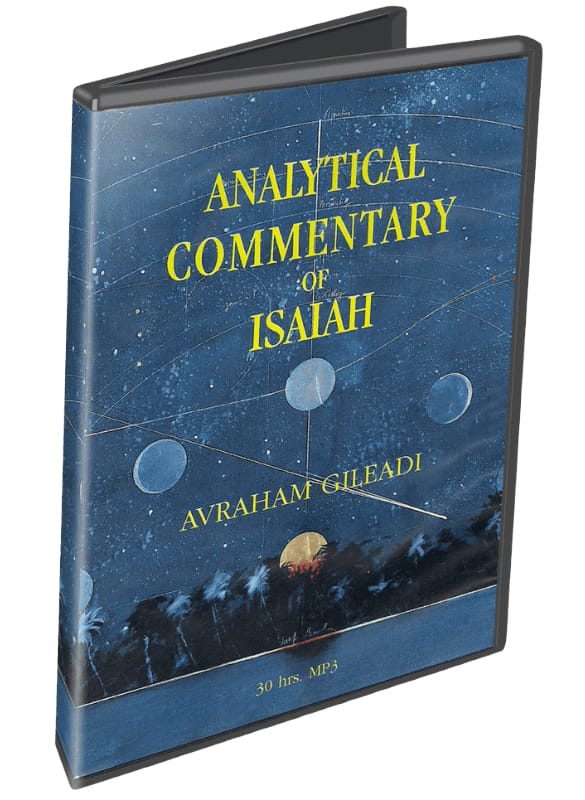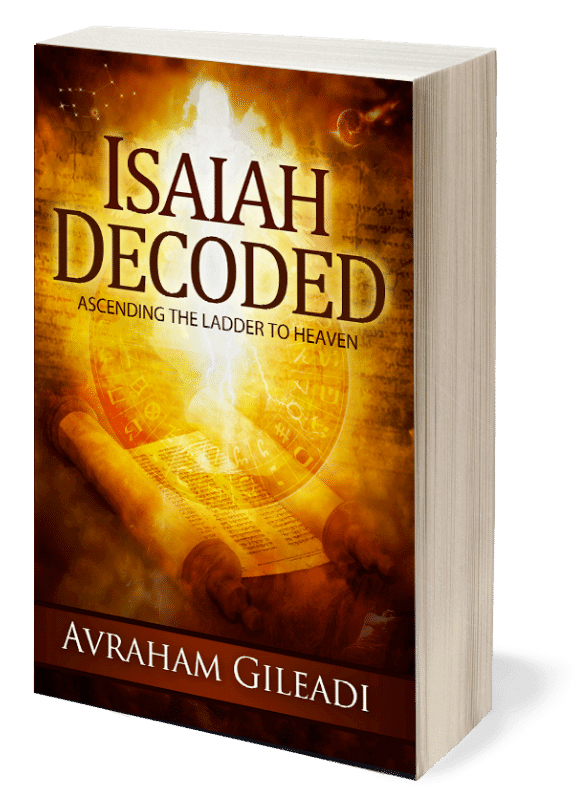A unique convergence of events in the history of God’s covenant people Israel, and the most extraordinary prophet-poet of that era (circa 700 B.C.), combined to produce a prophecy—the Book of Isaiah—which spoke to the ears of that generation and which speaks to ours today.
Sometime after commissioning Isaiah to call on his people to repent of their sins—knowing the time was almost over for them—God gave him an additional assignment. He was also to write a book for “the end-time” (yom ha’aharon) that would reveal the end from the beginning.
Isaiah 30:8Go now, write on tablets concerning them;
record it in a book for the end-time,
as a testimony forever.
Isaiah 46:10I foretell the end from the beginning,
from ancient times things not yet done.
The way Isaiah executed his twofold task was to capture his own day and the end of the world in a single prophecy. Having seen the end from the beginning in a great vision God showed him, he thereafter wrote only things that dealt with his own day and the end-time simultaneously.
It has long been a Jewish belief that Isaiah’s prophecy applies to both his day and the end-time—that the one foreshadows the other. Now the proof has come forward in Isaiah’s literary devices. These show that Isaiah alone is its author and that his is indeed an end-time prophecy.
Using an entire range of literary devices, Isaiah layered his prophecy so that its historical parts could double as an allegory of end-time events. A divinely conceived configuration of events unfolding in the world into which he was born facilitated his capturing two scenarios in one.
Isaiah 44:6–8I was at the first and I am at the last;
apart from me there is no God.
Who predicts what happens as do I,
and is the equal of me
in appointing a people from of old as types,
foretelling things to come?
Be not perturbed or shaken.
Have I not made it known to you from of old?
In this sense, the “end” or “end-time” was contained in the “beginning”—in the events of Isaiah’s own day or soon after that typified the end of the world. That ancient events could actually prefigure the end of the world in that manner was something only God could orchestrate.
Using literary structures and simple encoding tools, Isaiah composed his prophecy in such a way that its layered patterns contain an end-time message. These literary features radically change the rules for interpreting Isaiah’s prophecy from what the scholarly world has known.
Linear structures, for example, follow a timeline from Isaiah’s day to the end of the world. Their cyclical patterns of themes illustrate how God ultimately redeems his people. Here are two such structures, one patterned after Egyptian narrative stories, the other after a Ugaritic myth:
1. Trouble at Home, Exile Abroad, Happy Homecoming
Promised Land
Abroad
from Exile
2. Apostasy, Judgment, Restoration, Salvation
Against God
His People
Restores Israel
Comes to Reign
Layered over such linear structures are synchronous structures. These “synchronize” the events of Isaiah’s day and convert them into types of end-time events. In that futuristic context, an end-time “king of Assyria” conquers the world while God’s “servant” delivers his people.
The most comprehensive and impactful synchronous structure is Isaiah’s Seven-Part Structure. It not only predicts the end of the world but also develops a theology of spiritual ascent on a ladder to heaven. Such a systematic theology essentially mirrors the gospel of Jesus Christ.
Isaiah’s Seven-Part Synchronous Structure
Isaiah’s theology of ascent on a ladder to heaven shows that Jesus’ teachings were always an inherent part of Israel’s covenant doctrine. In an end-time context, however, spiritual ascent and descent accelerate as humanity faces a choice between good and evil, truth and falsehood.
Isaiah’s Seven-Part Structure further reveals how God operates solely within the parameters of the covenants he makes with his people and with individuals. Their relationship to him is most blessed when they keep the terms of his covenants on ascending levels of the ladder.
Whether it is to be spiritually reborn and ascend from one level to the next until one reaches God’s presence; or its opposite—the possibility of spiraling into lower realms of darkness—the theology behind spiritual ascent and descent is based on the terms of God’s covenants.
Thirty End-Time Versions of Ancient Events
Isaiah additionally transforms thirty ancient events into end-time ones. Whatever set a precedent in Israel’s past, he replicates into a new version of it. Compressed within just a few years is a new sequence of events that repeats former events but that now involves the whole human race.
A new chaos, creation, paradise, Sodom-and-Gomorrah destruction, bondage, Assyrian invasion, Assyrian world conquest, Assyrian siege, exodus, wandering in the wilderness, conquest of the land, inheritance of the land, building of the temple, etc.—all occur in an end-time context.
Although prophecies of these events appear scattered throughout his book, Isaiah connects them like dominos. One passage may contain a particular combination of new events while others contain different combinations. In the end, all link up to form a new, end-time sequence.
That new sequence of events is what defines the “end-time.” It is yet another way God foretells the end from the beginning that proves his divinity. This time around, however, these events implicate the entire world, of which the world of Isaiah’s day acted as a microcosm.


